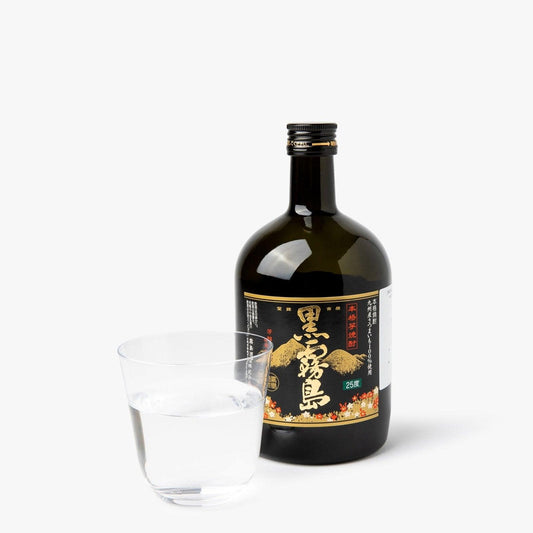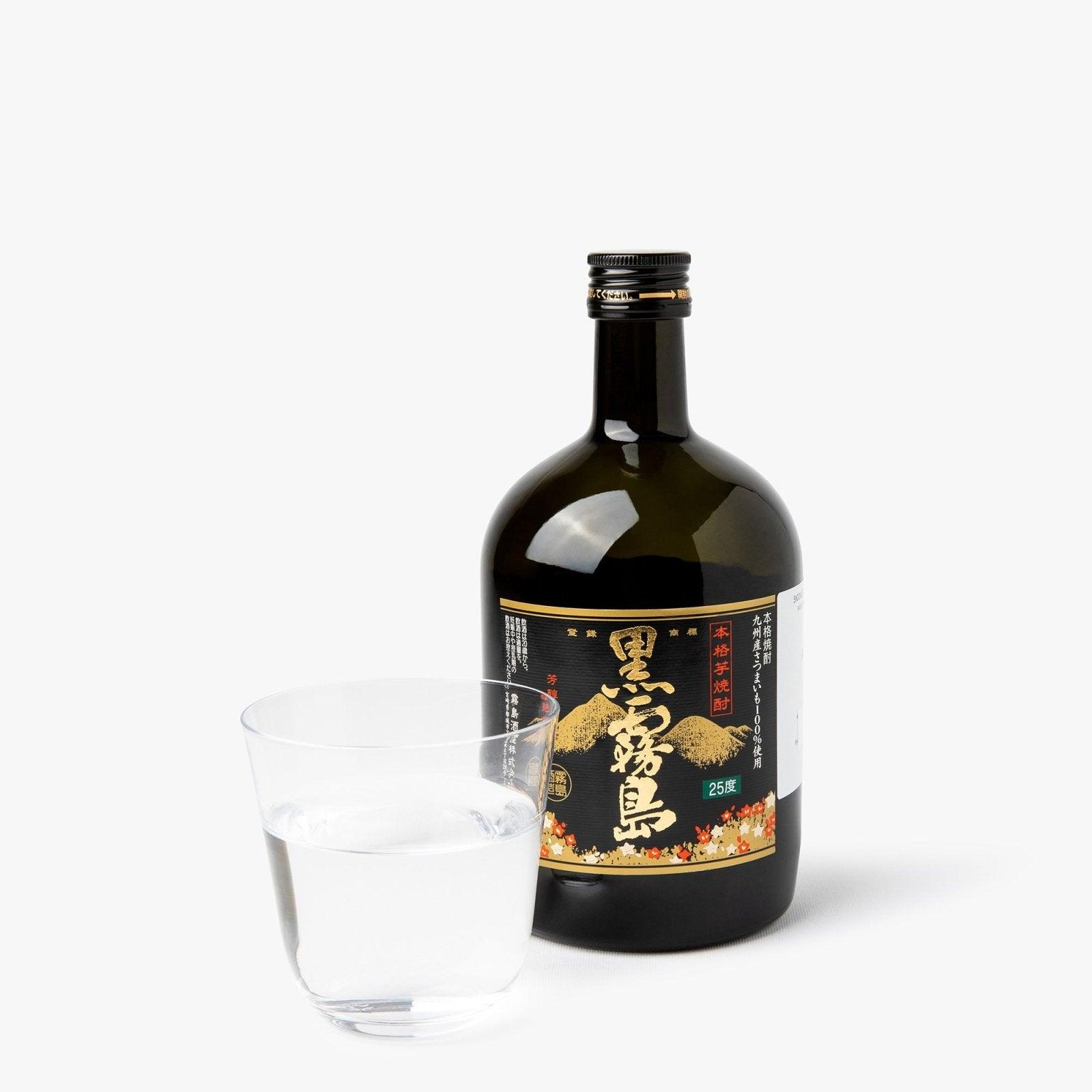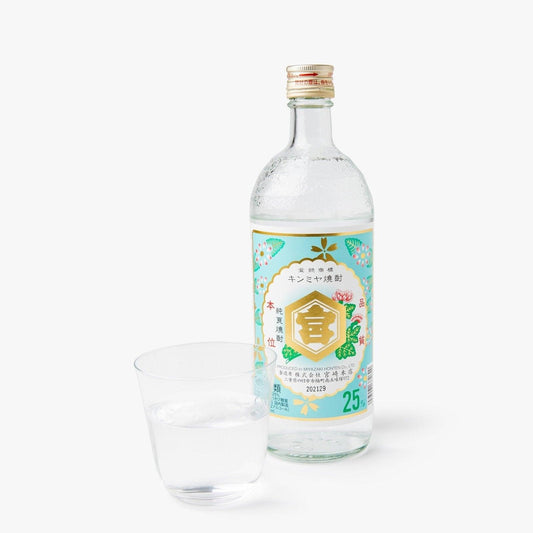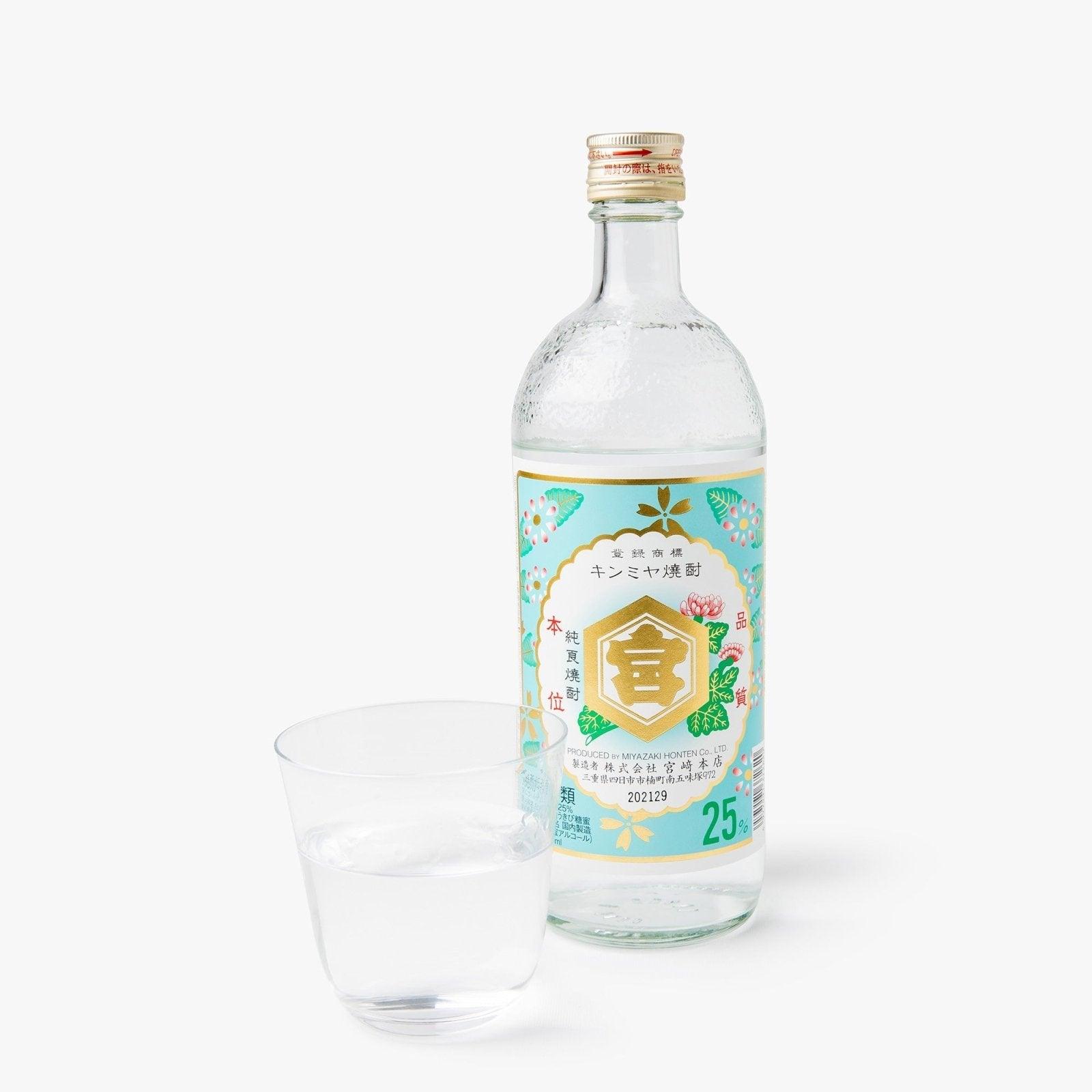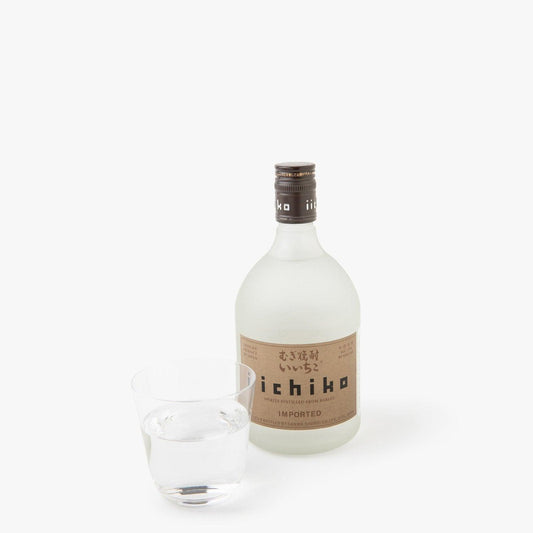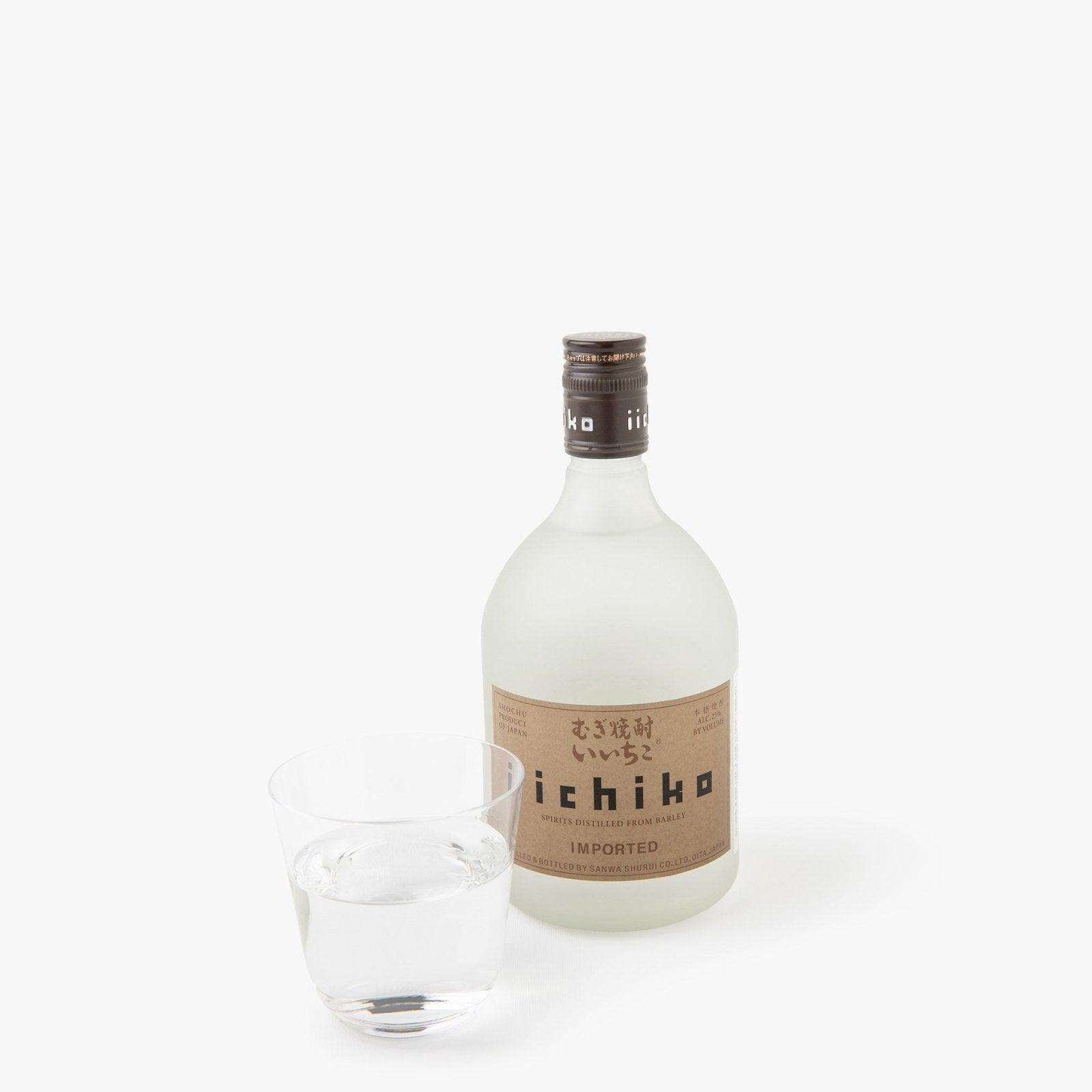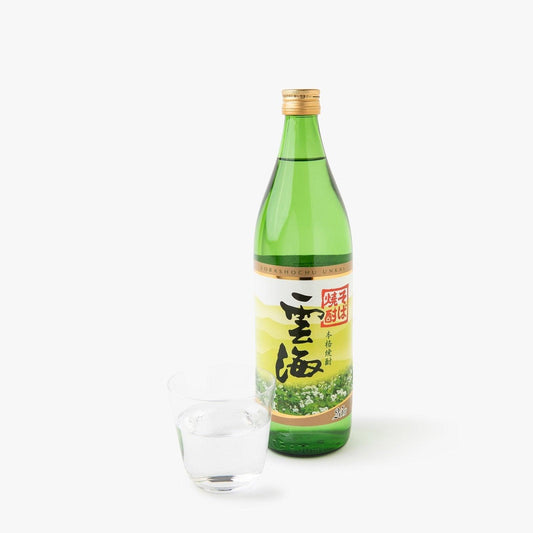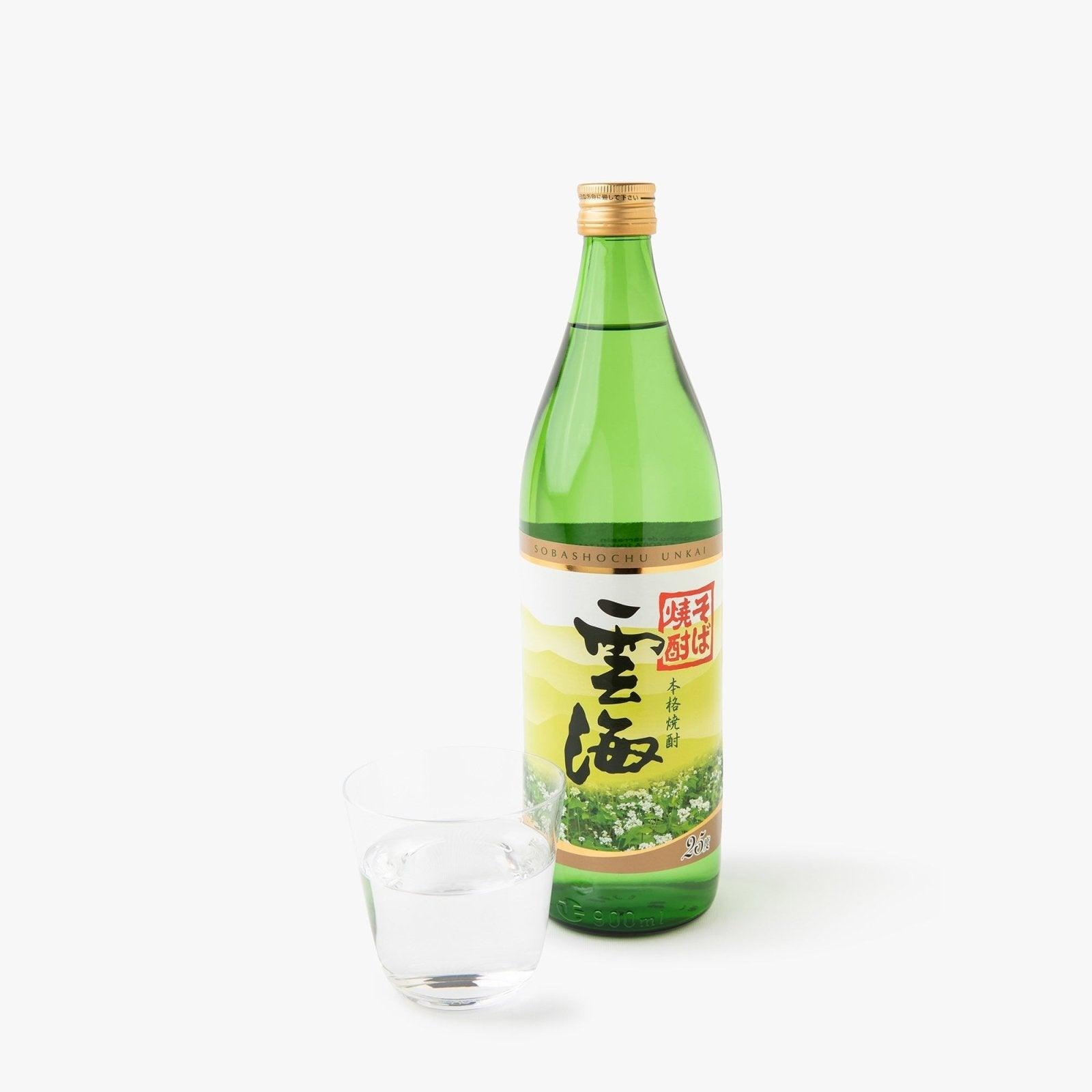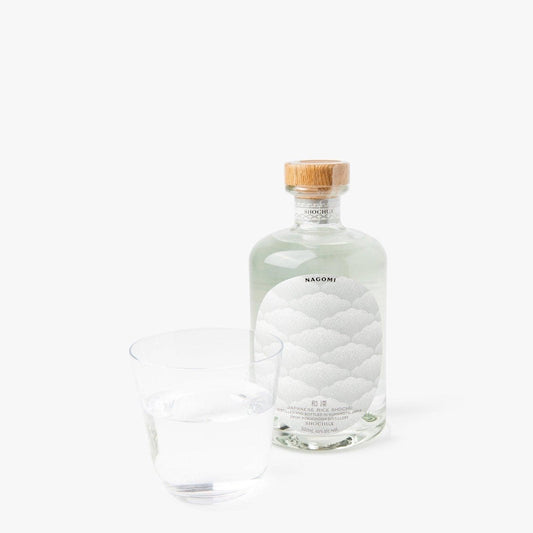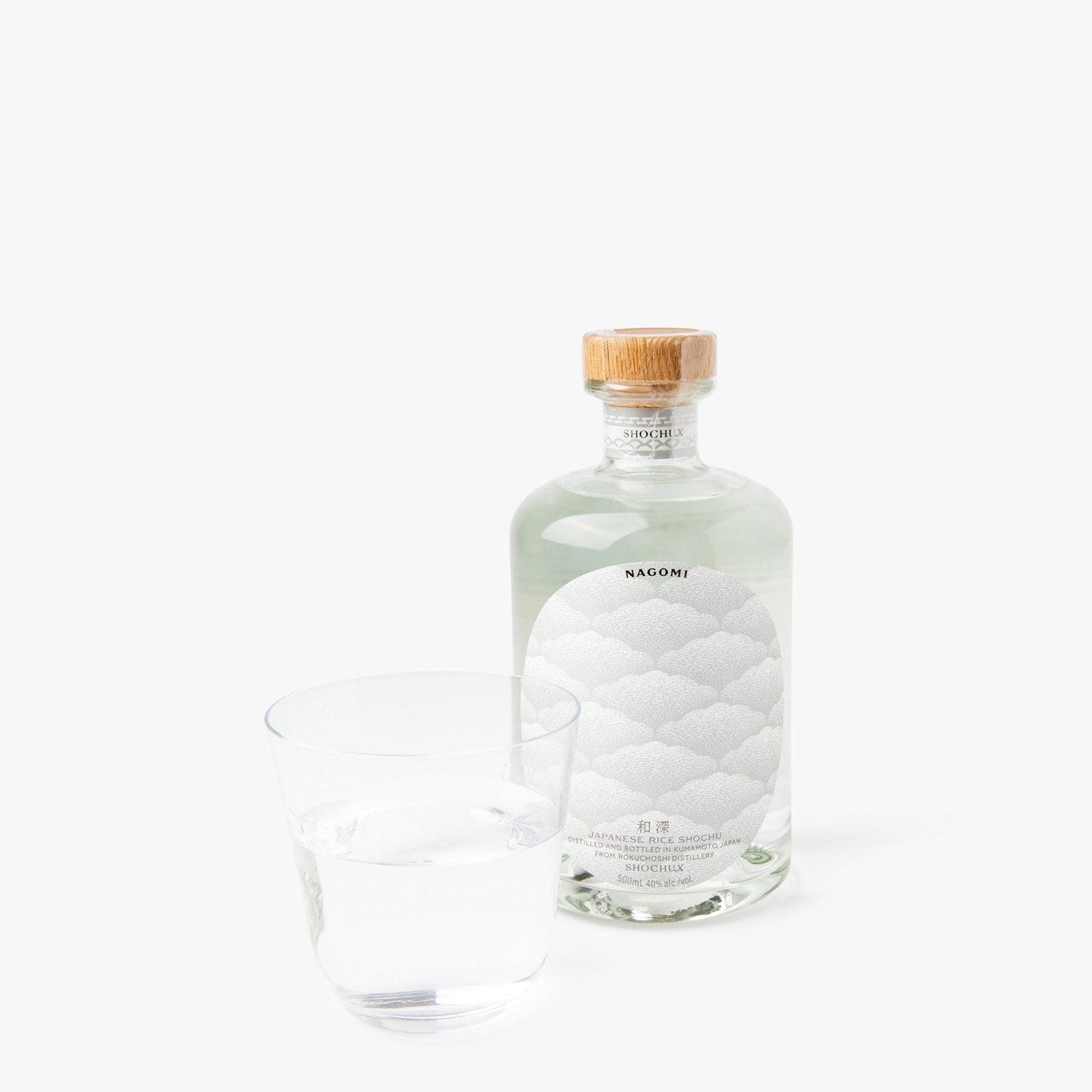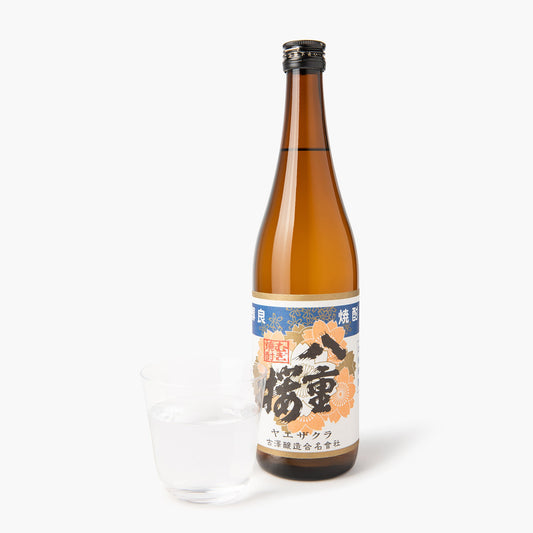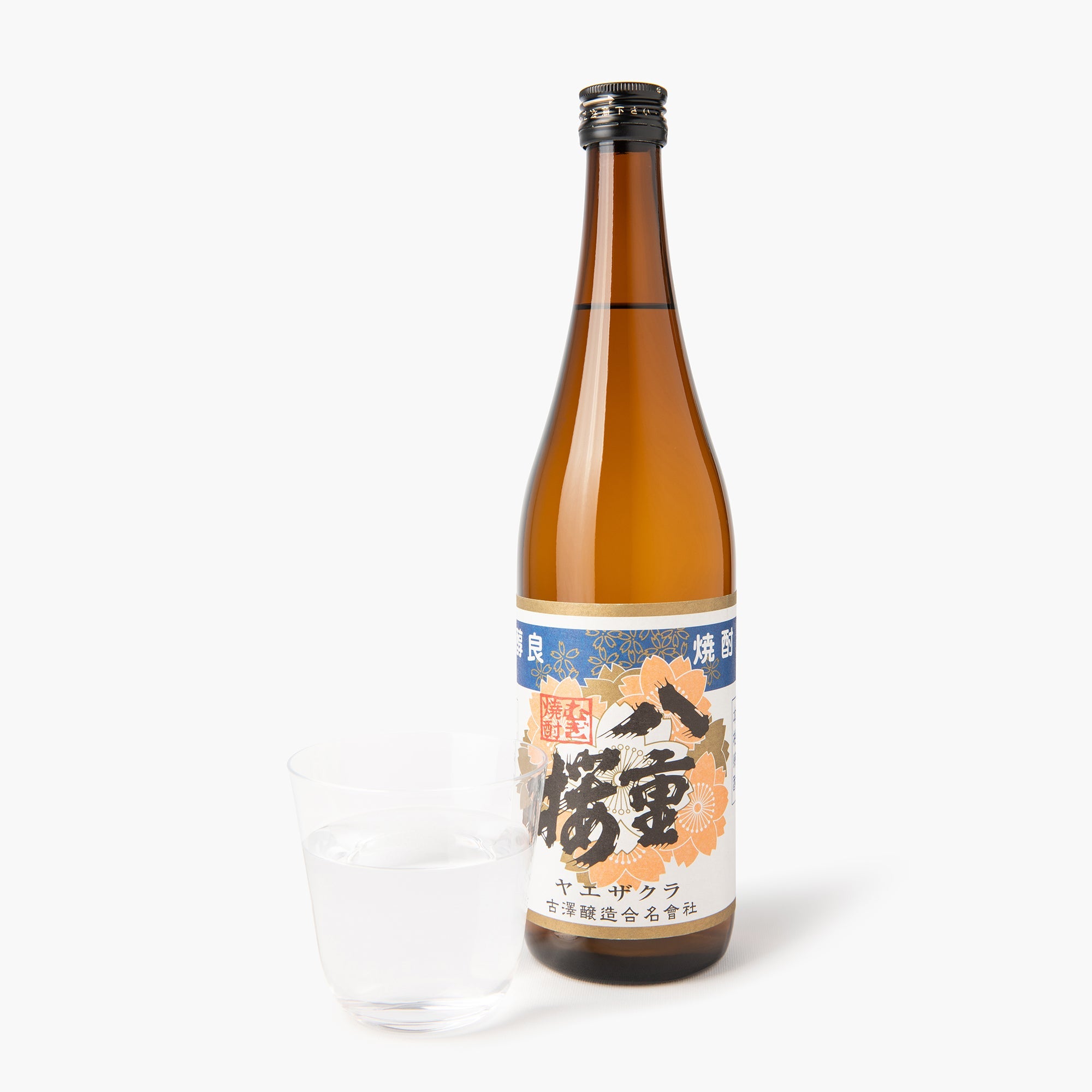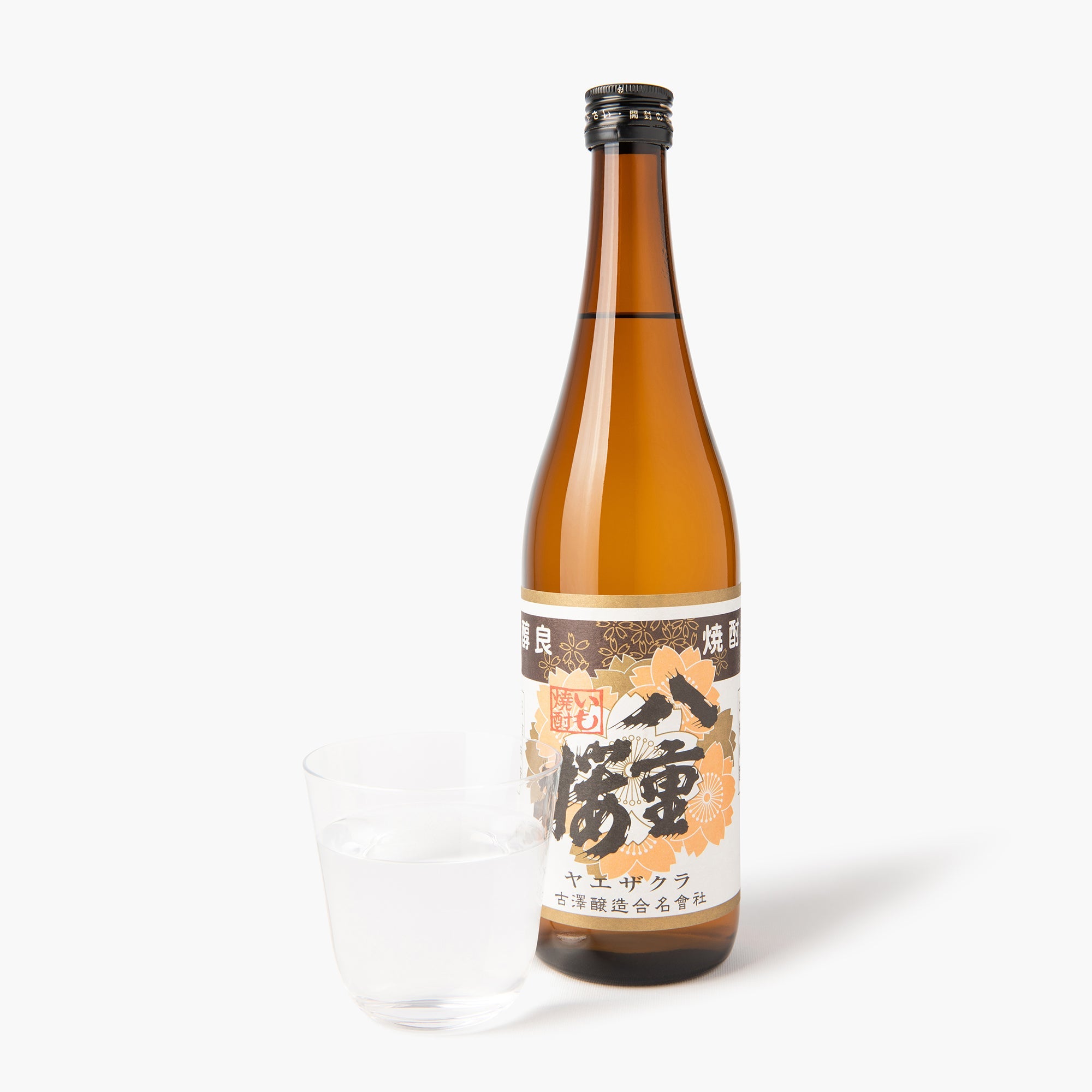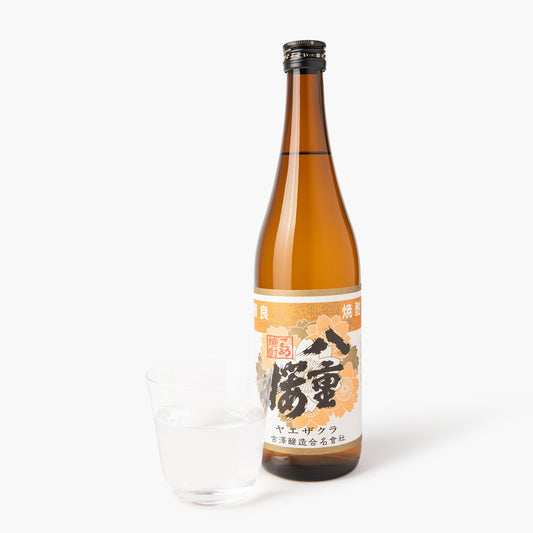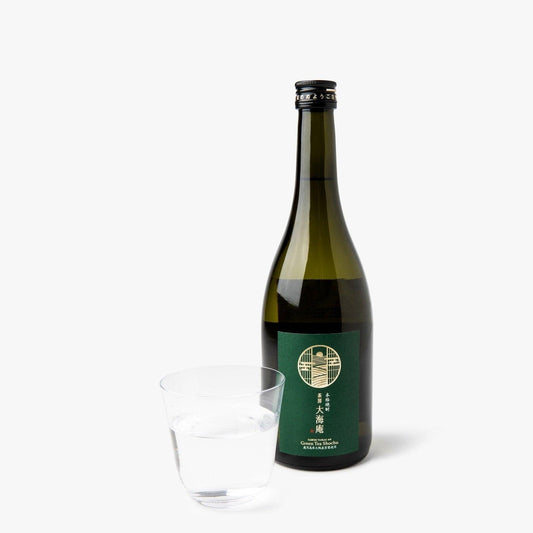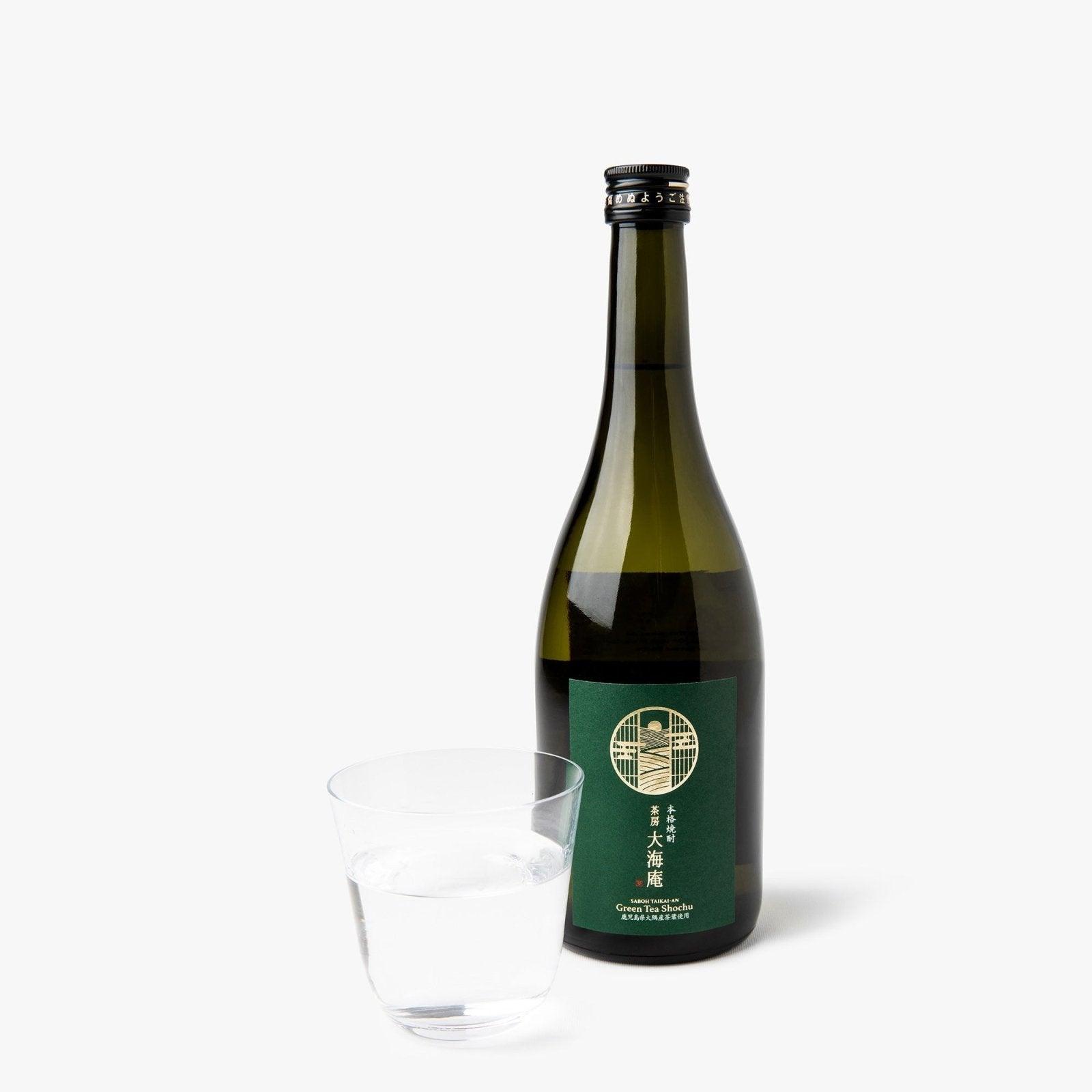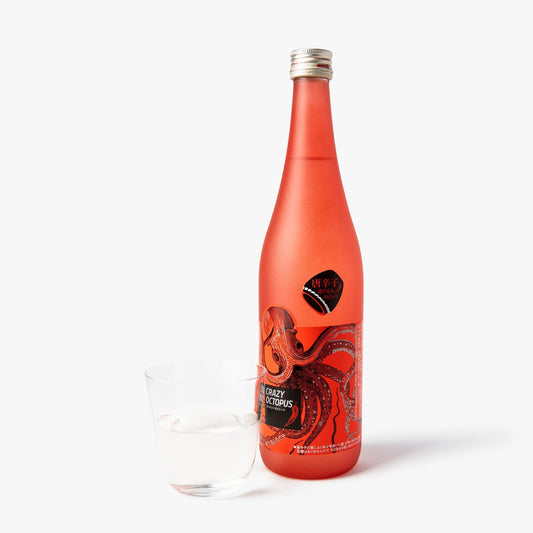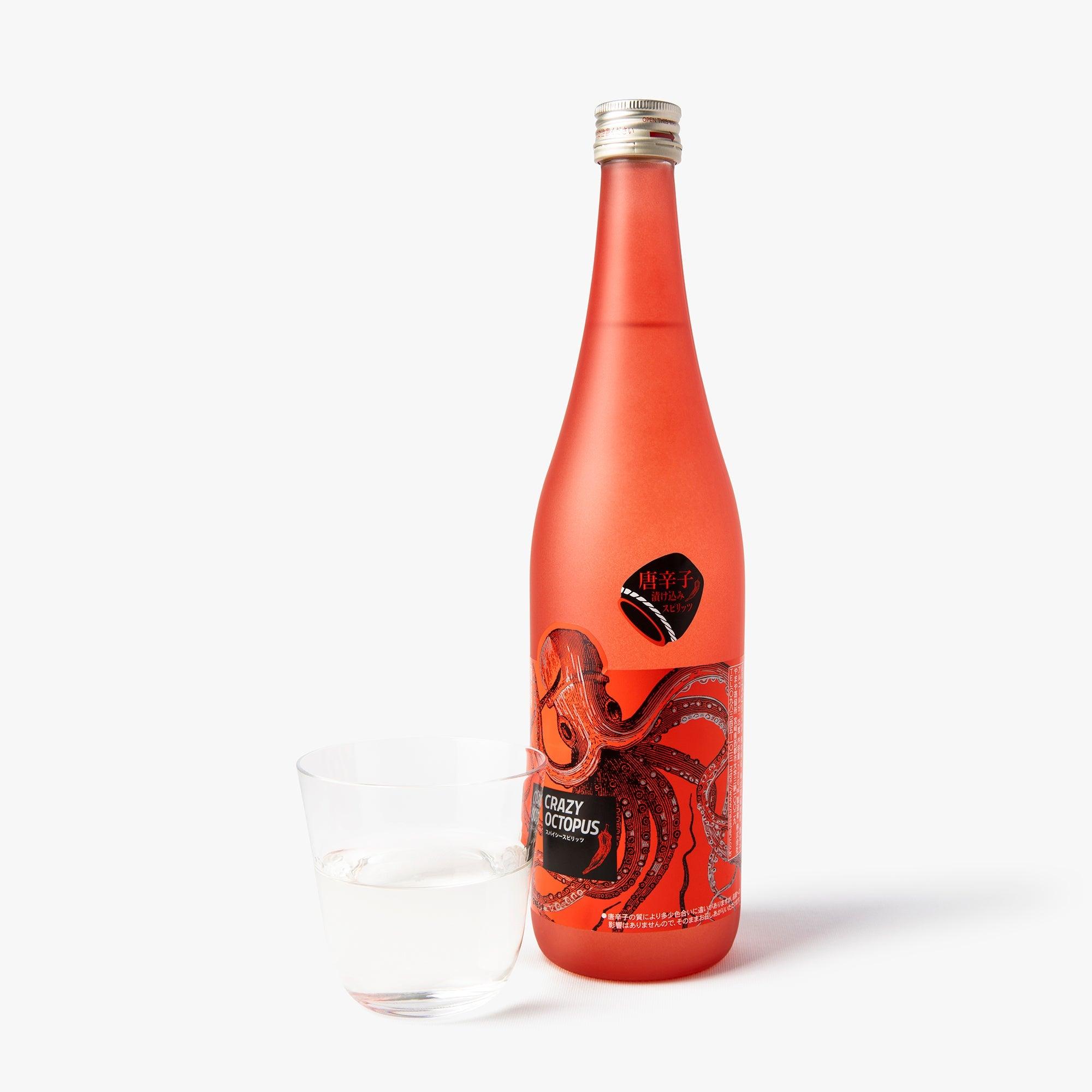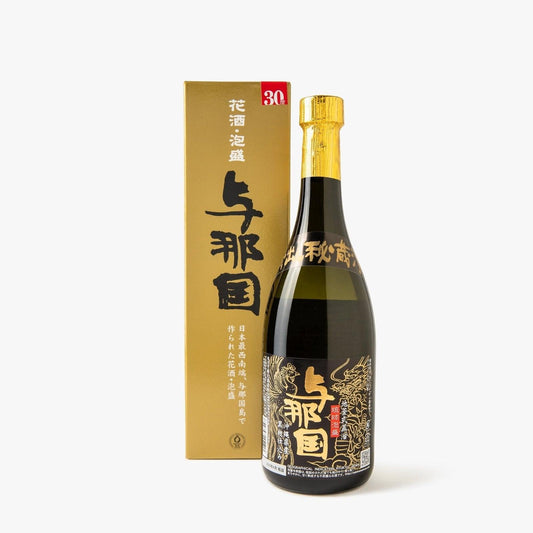Find out more about shochu and awamori
What is shochu and how is it different from sake?
Shochu is a distilled Japanese spirit, while sake is a fermented beverage similar to rice wine. Shochu has an alcohol content of 25-30%, while sake has an alcohol content of 14-16%.
Its production is based on a single distillation of fermented mash made frombarley, rice, sweet potato or other ingredients, with the use of black, white or yellow koji to activate fermentation. Drier and more aromatic, shochu offers a wide variety of flavors, from sweet and fruity to robust and earthy. Highly appreciated in Japan, it can be drunk neat, with water (hot or cold) or in cocktails.
In comparison, sake is brewed like wine, with multiple parallel fermentations giving it a rounder, umami profile. Unlike sake, aged shochu develops deeper aromas, particularly in the honkaku shochu and kusu (aged shochu) versions.
What are the main differences between shochu and awamori?
- Origin and appellation
Shochu is produced mainly on the island of Kyushu and in certain regions of Japan, while awamori is a traditional Okinawan drink with a protected appellation. - Ingredients and fermentation
Shochu can be made from a variety of ingredients, including barley, rice, sweet potato and buckwheat. Awamori, on the other hand, is made exclusively with long indica rice and black koji, which gives it richer aromas and a longer fermentation time. - Distillation and ageing
Honkaku shochu is distilled just once to preserve the aromas of the original must, while awamori is distilled just once, but with a higher alcohol concentration. Awamori is often aged for several years in jars to become kusu, a rounder, deeper spirit. - Taste and enjoyment
Shochu offers a wide range of flavors, from sweet, fruity notes to earthier aromas. Awamori, on the other hand, develops more complex aromatic notes, sometimes slightly smoky and more full-bodied than the usual shochu.
What makes awamori so unique?
- Exclusive use of black koji
Unlike shochu, which can be fermented with different types of koji (yellow, white, black), awamori is made exclusively with black koji. This ferment promotes deep, rich-aroma fermentation, giving awamori its complex, slightly smoky flavors. - Long rice and unique fermentation
Awamori is made with long indica rice, different from the Japanese rice used for sake or some shochu. Fermentation takes place in a single stage, with a high concentration of must to extract maximum flavor. - Distillation and aging (Kusu)
Distilled in a single batch in a traditional still, awamori retains the full richness of the ingredients used. Unlike shochu, it is often aged for several years in jars, developing softer, more complex notes. Once it has matured for more than three years, it becomes known as kusu, a product much sought-after for its deep, full-bodied aromas. - A traditional Okinawan beverage
With its protected designation, awamori is a true symbol of Okinawan culture. It is appreciated for its powerful taste, silky texture and ability to be enjoyed neat, with water, or in cocktails.
What Japanese dishes should shochu and awamori go with?
Shochu and awamori are Japanese spirits with a variety of flavors, perfect for accompanying a wide range of Japanese dishes. Their diversity makes them ideal for pairing with light dishes such as sushi, or richer ones such as tonkotsu.
Pairing with shochu
- Barley shochu (mugi shochu): Light and aromatic, it goes well with grilled dishes such as yakitori or grilled fish.
- Sweet potato shochu (imo shochu): More full-bodied and earthy, it accompanies rich dishes like tonkotsu ramen or kurobuta (Kagoshima black pork).
- Rice shochu (kome shochu): Mild and balanced, it's perfect with sushi, tofu or raw fish dishes.
- Buckwheat shochu (soba shochu) With its roasted aromas, it's perfect with simmered dishes such as nikujaga (beef and potato stew).
Pairings with awamori
The more powerful and structured awamori pairs particularly well with Okinawan dishes and more intense flavors:
- With rafute (braised pork), it balances fatness with its deep aromas.
- Served with goya champuru (stir-fried goya, tofu and pork), it brings out the bitterness of the vegetable.
- It also goes well with marinated dishes such as miso fish or grilled meats.
Tasting tips
- With light dishes, try a fresh shochu with water.
- For richer dishes, a shochu on the rocks or an aged awamori (kusu) will reveal the full complexity of the aromas.
How does aging affect the taste of shochu and awamori?
Honkaku shochu, often drunk young, can also be aged in ceramic jars, oak barrels or stainless steel tanks. This maturation gives it :
- Smoother: initial aromas (earthy, fruity, cereal-like) become rounder and more balanced.
- Woody, vanilla notes when barrel-aged, sometimes reminiscent of whisky.
- A more structured must, with a more velvety mouthfeel.
Aging awamori (Kusu)
Awamori is traditionally aged in jars and becomes kusu when it has matured for more than three years. This aging process intensifies :
- Rich, deep aromas, with notes of dried fruit, nuts and caramel.
- Roundness on the palate, making Awamori softer and more complex.
- An aromatic longevity, where the balance between alcohol and must sublimates over time.
The best kusu can be aged for 10 years or more.
How to enjoy these spirits
Shochu honkaku can be enjoyed in several ways:
- Pure (ストレート - straight): To experience the full richness of raw aromas, ideal with aged or full-bodied shochu (imo shochu).
- On ice (ロック - on the rocks): Refreshes and softens the earthy, umami notes of sweet potato or barley shochu.
- Extended with cold water (水割り - mizuwari): Reduces alcoholic intensity and provides a softer, lighter sensation, perfect for meals.
- Extended with hot water (お湯割り - oyuwari): Reveals deep aromas and gives a rounder texture, recommended for rich shochu likeimo shochu.
- With sparkling water (ソーダ割り - sodawari): A sparkling touch that enhances the fruity, cereal notes of barley or rice shochu.
Awamori, more powerful than shochu, is enjoyed differently depending on its age:
- Pure: Ideal for young awamori, offering an explosion ofpowerful aromas.
- On the rocks: Softens the heat of the alcohol and brings out the roasted, spicy notes.
- Lengthened with water: Very popular in Okinawa, this method balances flavors while reducing intensity.
- In cocktails: A young awamori can be used in cocktails with citrus fruits (yuzu, lemon) for a refreshing touch.
Tips for successful tasting
- Choosing the right glass: A whisky glass for pure tasting, a tumbler for longer versions.
- Serving temperature: A warm shochu develops its rich aromas, while an awamori on ice reveals its sweetness.
- Food & wine pairings: Light shochu goes well with sushi and grilled dishes, while aged awamori enhances spicy and braised dishes.
Ordering alcohol is reserved for people of legal age, in accordance with the legislation in force in your country.









